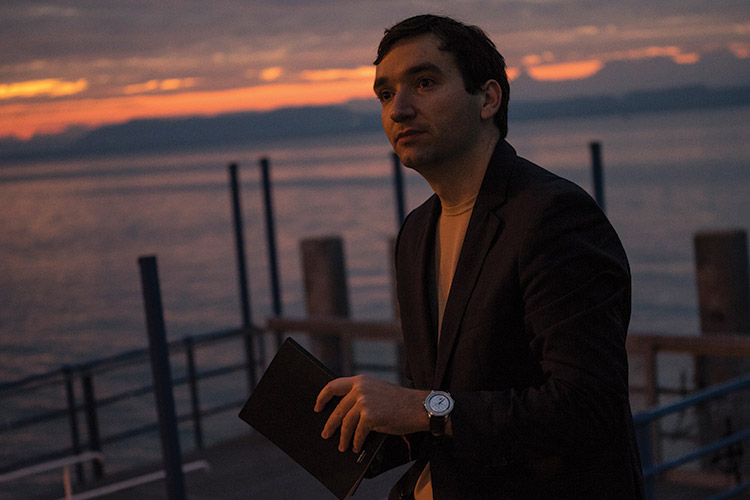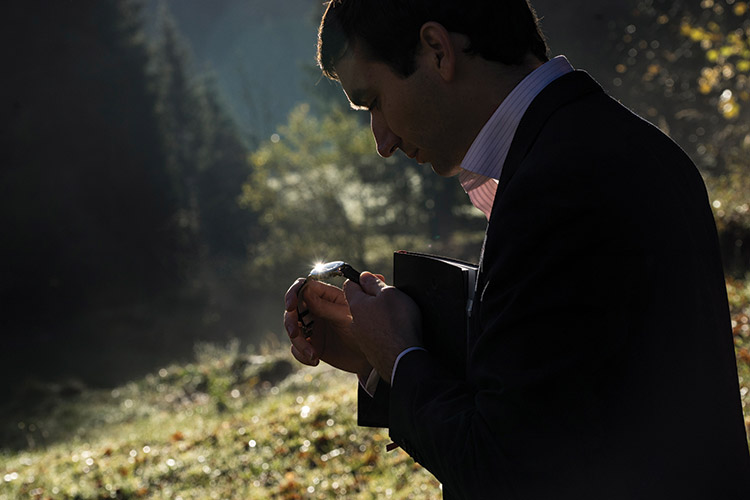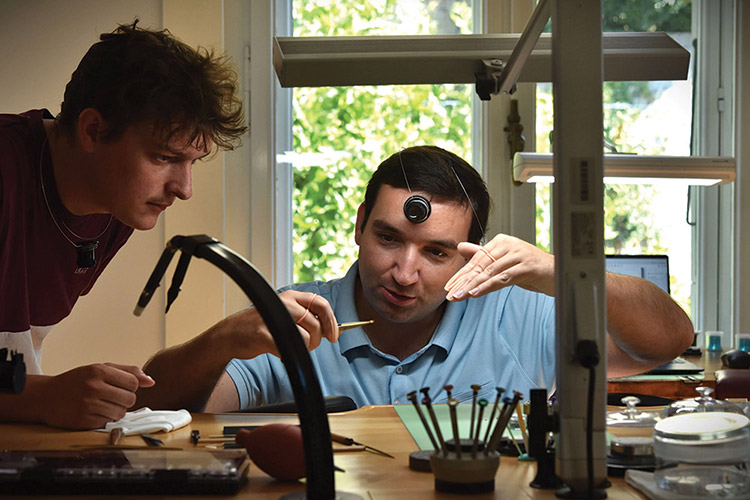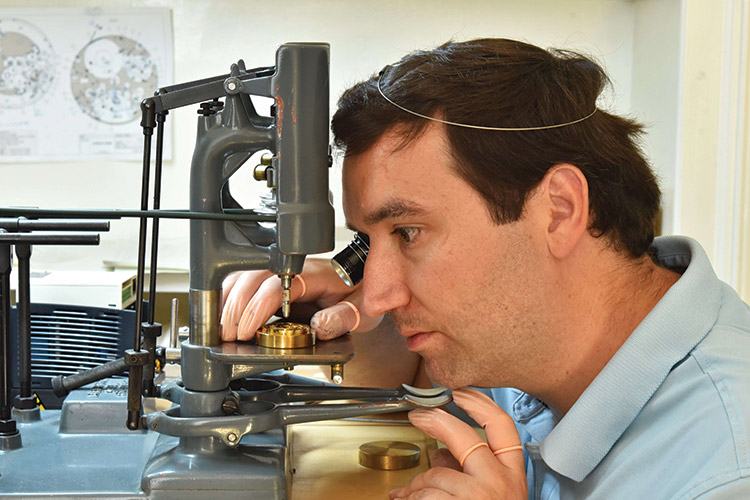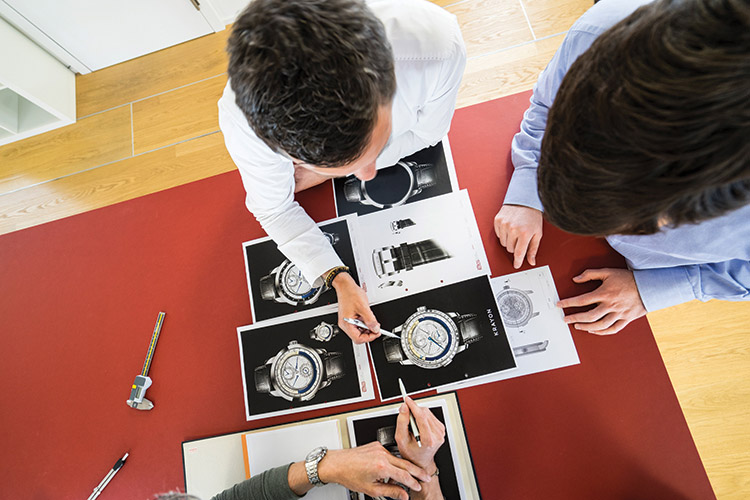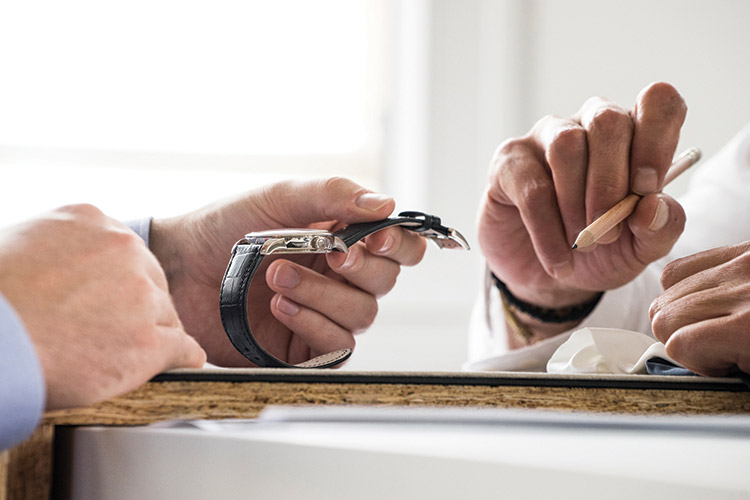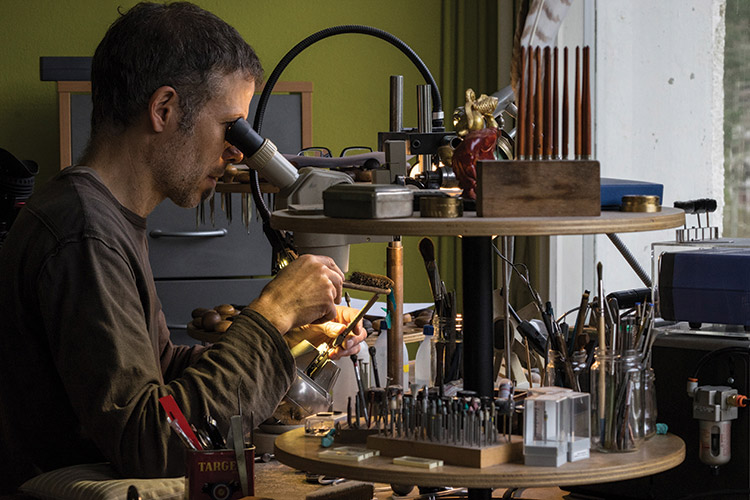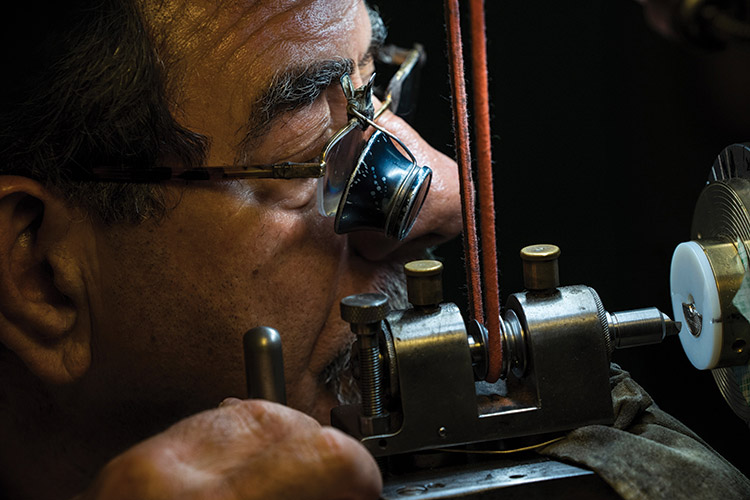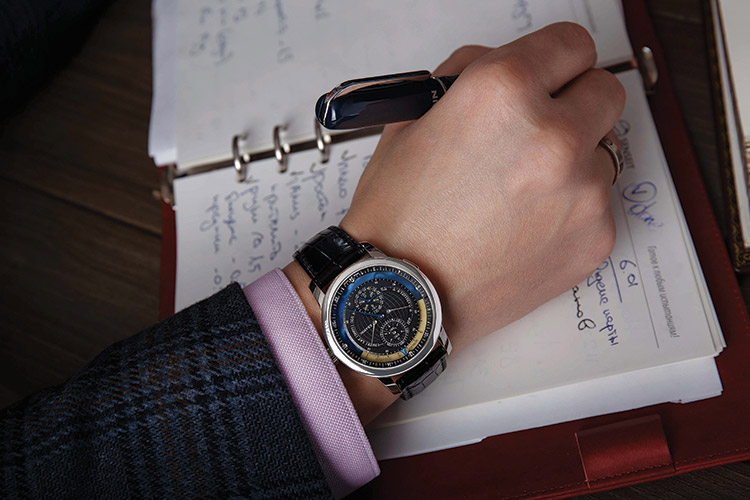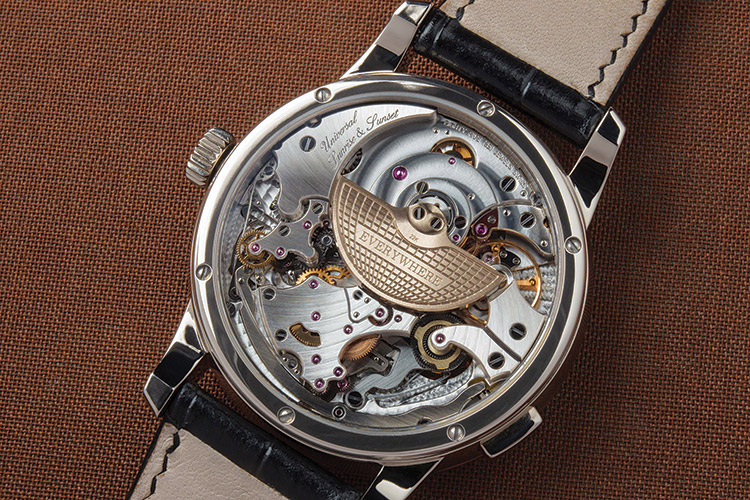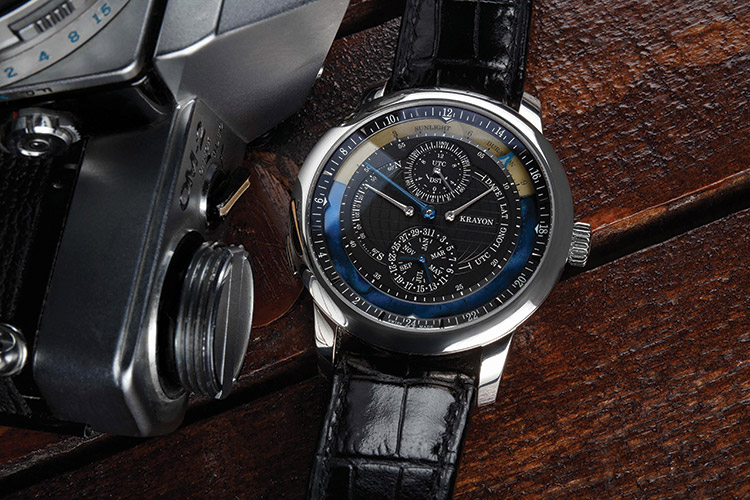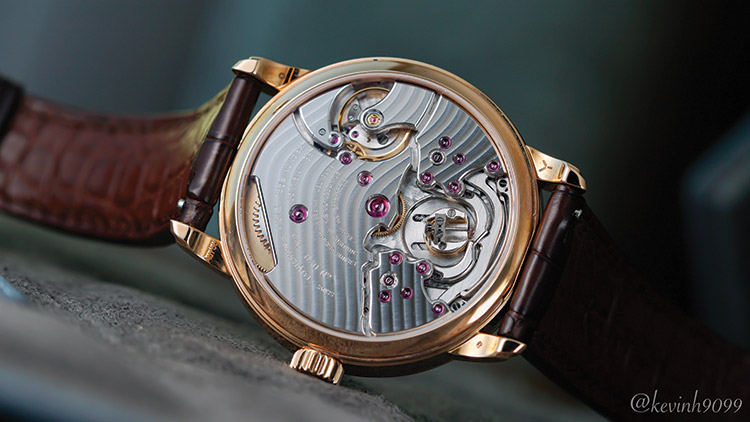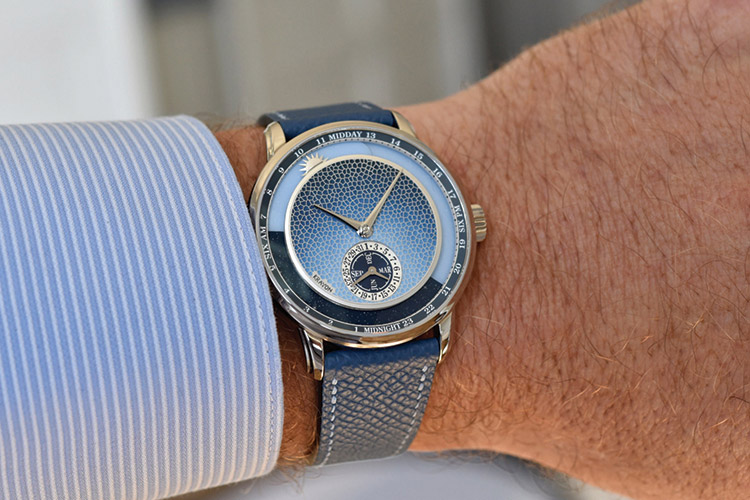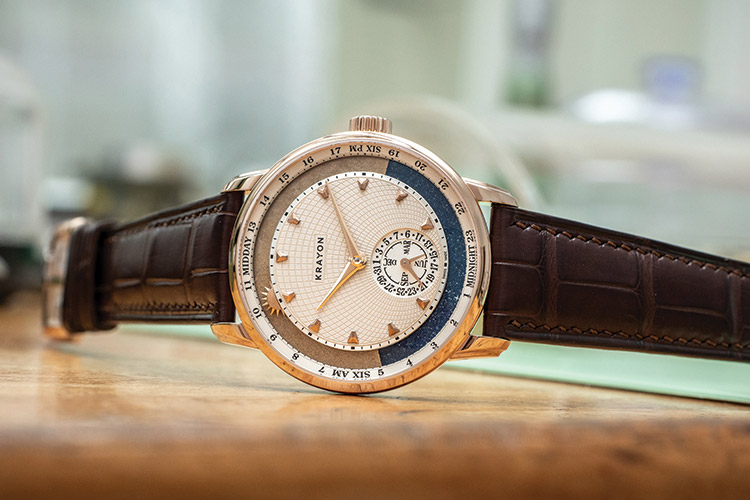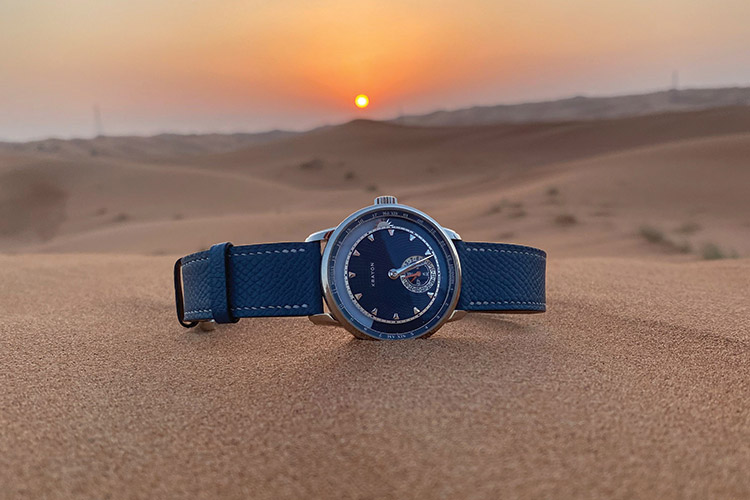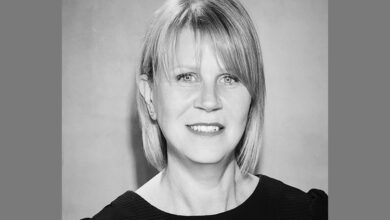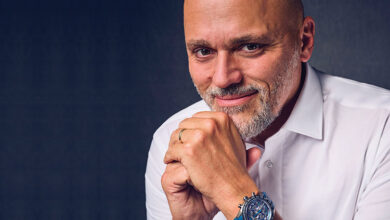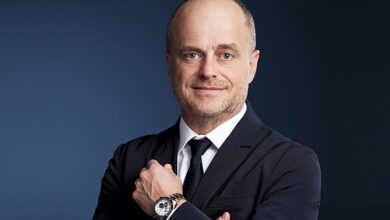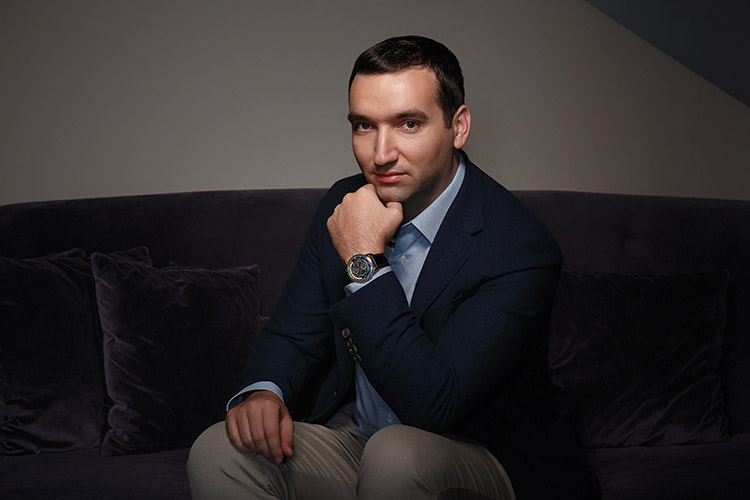
In this ongoing series featured every month, “Day & Night” focuses on individuals who have impacted the world of haute horlogerie positively… Though clocks and numerous instruments that measure or tell time have been around for centuries, it had been almost impossible to compute the times of sunrise and sunset across the world at different locations. Until the arrival of Rémi Maillat, founder of Krayon, who stunned the horological world with his “Everywhere”
Some perpetual calendars or other astronomical calendars can calculate the times of sunrise and sunset, but only for a particular location that is set at the request of the buyer before the timepiece leaves its manufacture. And then came Rémi Maillat, whose desire to snorkel at sunrise, led him to create horological history.
To horology via robotics
Rémi Maillat, who was born in Montreux, Switzerland, had always been interested in mechanical engineering. He elected to study micro technology in university, and Rémi admits that at that time, he was not really interested in watchmaking per se. “It was a way to learn automation and robotics, and it was more a way of learning to build machines and any kind of equipment. Because my father was also a micro technology engineer, it was a not a surprise that I chose this path. My mother used to teach mathematics, and so, for me, studying the sciences was not a very surprising choice.”
It was while Rémi was studying micro technology in Le Locle University of Applied Sciences that he discovered watchmaking. “What I really enjoy about watchmaking is that it combines a scientific approach in engineering, with mathematics and artistic creation. A mechanical watch today is not only about the function but is also about aesthetics. A lot of effort and energy go into the shape, aesthetics, and the balance of the movement. I love this aspect of watchmaking; something that is not present when we design machines.”
Mastering complications @ Cartier
After graduating from Le Locle engineering school, Rémi started working at the Cartier Manufacture in Neuchâtel in 2007. At that time, “Cartier had begun its movement development team and was starting to conceive and produce complicated watches and movements, with the Geneva Seal. I enjoyed working as a design engineer in the movements department.”
“I was working with Carole Forestier-Kasapi, who headed the movements department for Cartier. She would sketch a new concept and then a team of engineers like me would work to make it a reality. It was good time because the movement development had just started and had just 6-7 people. When I left six years later, it had more than 150 people, with teams working in Development, Prototype, and even a very small production team for Fine Watchmaking.”
During his stint at Cartier, Rémi helped develop the Cartier Mysterious Double Tourbillon as well as other complications such as minute repeater, perpetual calendar, and an automatic tourbillon. “I basically finished college and was straight away working on high complication pieces. My first project was the Cartier Mysterious Double Tourbillon, and I started working on it almost from inception.”
Rémi was also the technical project manager and was in contact with the other departments and various suppliers for the prototyping and the initial production. As the technical expert in movements, he was always consulted for the development of any movement in Cartier. His expertise was “studying and creating small, shaped, or very thin movements and many more. One of the movements I created is still used in the Crash watch.”
Setting up Krayon
It was around this time that Rémi began to dream of becoming an independent watchmaker. “I remember talking about that with my wife and we decided to aim to make it happen within one year.” Around the same time, at Cartier, Rémi was given the choice to either manage a team or become more of an expert in the technical field. Rémi chose to stay on as an engineer.
“Then in 2013, I founded Krayon. In French, the word Crayon written with ‘C’ means a pencil and that is the very first tool we use for any technical or artistic creation”. Just changing the ‘C’ to a ‘K’, he came up with Krayon. “Initially, we were offering services such as consulting, technical development of movement, and also developing ideas and concepts. My wife was working with me, and we worked with both large luxury groups and independent watchmakers.”
Krayon was helping design movements for other independent brands and also troubleshooting for them – solving technical issues, improving functions, or ensuring reliability. “I also learned a lot because I was working with LVMH at the time that TAG Heuer was making some very spectacular movements. This was when Jean-Christophe Babin was handling TAG Heuer, and they debuted the Mikrogrider, which measures time accurately to 5/10,000ths of a second.”
Rémi, at this point, was still thinking that his role would be limited to only getting new ideas or developing prototypes. “I would never have thought about creating my own watch or my own brand. I was trying to make an Opus for Harry Winston.” Sadly, his entry was not selected and later the project itself was discontinued. “It was like a failure for me. I continued trying to find an idea or a partner to develop further”.
Inspiration for “Everywhere”
Rémi explains how a fishing trip with his wife provoked him to attempt the “Everywhere” watch that would provide a universal mechanical calculation of the timings of the sunrise and sunset. “This was around 14 years ago, and we both enjoyed snorkelling. The very best time for snorkelling is the exact moment of sunrise, because at this moment we can see both the fish populations – fish that are diurnal, as well as the nocturnal varieties. It was while we were on a holiday in Spain, and I had invited my wife to go snorkelling with me the next morning.
They would have to get up very early in order to reach the place and set up their equipment without missing those few moments – before and after sunrise. Rémi reminiscences, “We were a bit early, and we were waiting for the sun to rise over the sea. It was then that the thought stuck us that it would be really helpful if we could have a mechanical watch that would give us this information – not only in our home city, but for everywhere we could travel to.”
Rémi toyed with this concept for some years, but it posed a number of technical challenges. Numerous parameters – including the latitude, longitude, and time zone – would need to be input to calculate the timings of sunrise and sunset at all locations rather than one particular location. “I decided to approach the problem step by step. What were the parameters I needed to input and how I could do this so that it would be a universal one? By the time I found the mechanical principle to enable this, I was ready to take on the challenge of creating a watch with this mechanism. We also had a customer ready to follow us in this adventure and acquire the first piece.”
Challenges and rewards
Obviously, the challenges facing Rémi were tremendous; “The first step was to understand and deconstruct the influence of each parameter, then finding the main mechanical principle that would address the issue. I used differential trains to add the various parameters and outputs, with the final product that would be a combination of all of them. The difficulty was in how the differential train mechanisms displayed the currently selected latitude and longitude and creating a function selector that allowed the user to select and adjust each of the parameters. At its core, the mechanism is not very complex, but if we added everything we needed, then it becomes extremely complex.
“Another challenge was that I wanted the timepiece to have reasonable dimensions; it was a real challenge to create an easily legible dial and to house the 595 components of the movement within a very small area.” The movement of the Everywhere timepiece is just 35.40 mm by 6.50 mm and, to make all the components fit in such a small place, Rémi had to make some compromises. “Everywhere was more focused on the engineering and less on the finishing of the movement. Another challenge was that, to be effective, all the parameters had to be set correctly. Otherwise, the predicted times would not be accurate.”
With the debut of Everywhere, Kryon began to be known as a watch brand and at that time Rémi had to take a call on his branding. “I realised that a crayon – an essential element at the very beginning of every artistic and technical creation is also a key ingredient in a Krayon timepiece and would perfectly match the DNA and the spirit of the timepieces I want to create.”
While Rémi decided on the layout and the indications on the dial of the Everywhere watch, he engaged outside consultants on watch design for the development of Everywhere. “Because Everywhere was my first time piece, I had to create everything from scratch. I did not take a lot of risk in terms of the design of the watch. I wanted something that is timeless, elegant, and not too extravagant; something that would please everyone. I competed in GPHG in 2018 with Everywhere and it was awarded the Innovation Prize. For me, that is the best recognition I could have for my work.”
By this time, though Everywhere had won a GPHG, not many people had seen the actual timepiece. Rémi was customising each of the Everywhere watches for his clients and it took him around a year to create each bespoke piece. Rémi had presented his first timepiece in 2017 and had won the GPHG in 2018. “The GPHG focused a spotlight on Everywhere. That was an important achievement, but it also pushed me to focus on the other aspects of the watch. I had received feedback from my customers for Everywhere, so I was continuing to learn what was important and how to create a balance.”
“Anywhere” follows
“Then I decided to create “Anywhere”, which is based on the core mechanism of the Everywhere. I now understood that in addition to the mechanics of a watch, it also had to be easy to read, easy to understand, and easy to adjust. It had to be a timepiece comfortable to wear. For the user, feeling the watch, the winding of it, and the use of functions – all created a sense of connection with the watch, and this was one of the points to focus on when creating a timepiece.”
Rémi wanted to make Anywhere an easier watch to use. While it kept most of the functionality of Everywhere timepiece, Anywhere is simpler to use. It is easier to read and also features a smaller case. “The movement is fully visible in the Anywhere, and I could focus more on the finishing. I could feature larger jewels, larger counters, and larger bevelling; in Anywhere, I could use the movement as a canvas for high-end finishing.”
High-end finishing was a new skill that Rémi had mastered; it was not something he had experienced in his previous work in large companies where machine made was the norm. “Everything I created was made by hand, so high-end finishing was required. I first learned the techniques for doing this and I had to then teach them to my team.”
It took Rémi a lot more time to decide on the case, dial, hands, displays, and the different colours that he wanted to use for Anywhere than it did for the technical development of the movement. Often inspired by paintings, Rémi’s use of shades of blue for Anywhere was influenced by a painting he saw in the Kunst Museum at Basel.
Phenomenal growth
When Anywhere debuted in 2020, Krayon consisted of just three people – Rémi, his wife, and the watchmaker – working at home. Since then, he has enjoyed an impressive feedback from his customers and the market, especially for the Anywhere model and this has contributed to a phenomenal growth of the brand. “In the past three years, we have developed a lot. We have moved to a new location, and today we are a team of 10 people at our manufacture, and we have developed a network of retailers worldwide. Krayon is now a brand, and in 2023, we produced 50 watches. We presented Anywhere for GPHG in 2022 where it won in the Calendar and Astronomy category – the second consecutive GPHG prize for Krayon.”
Now Rémi is working on his next movement and complication that will be evocative of Krayon’s DNA, perhaps even more than Anywhere.
Krayon creations are available in the region at Perpétuel on https://perpetuel.com/
